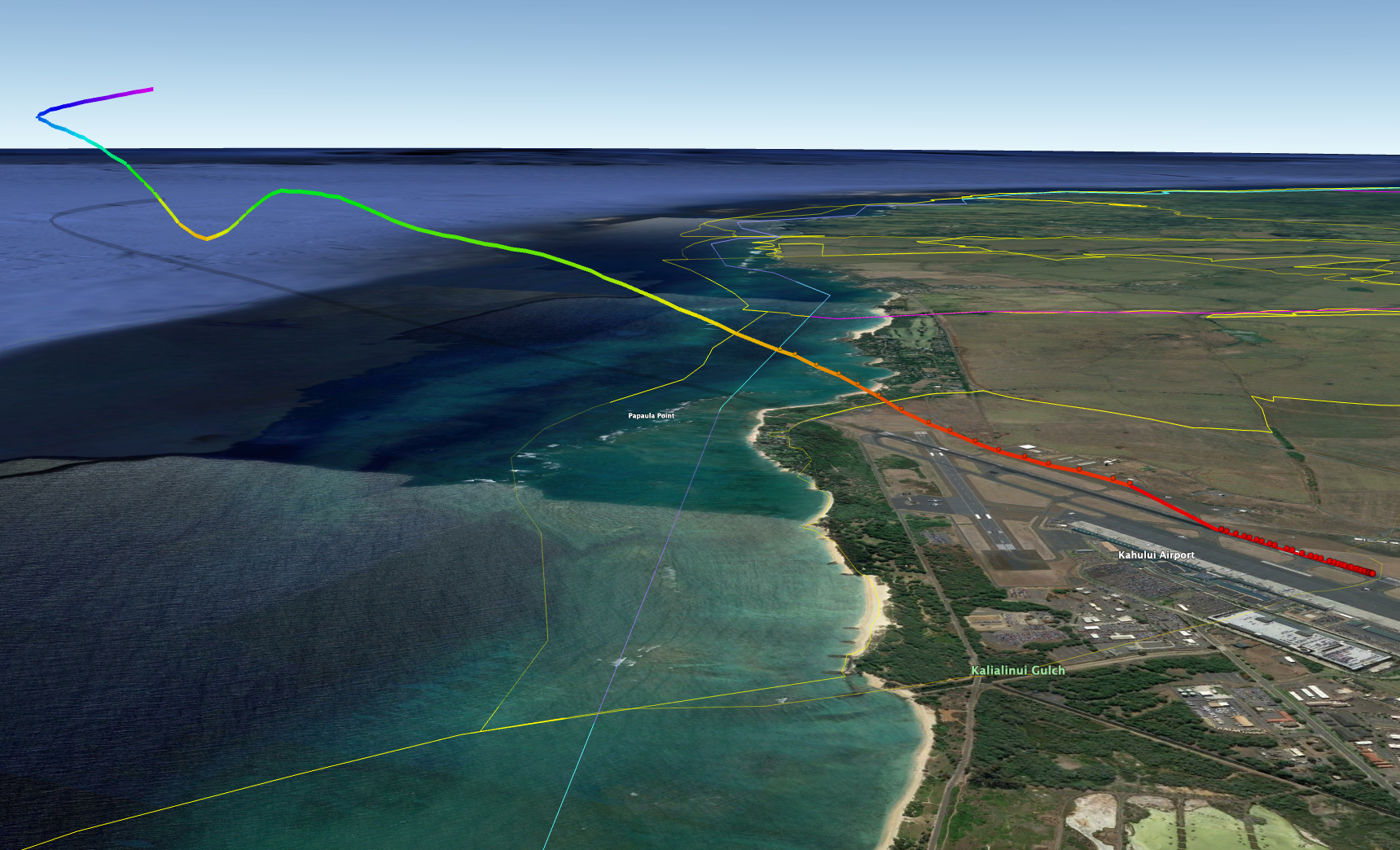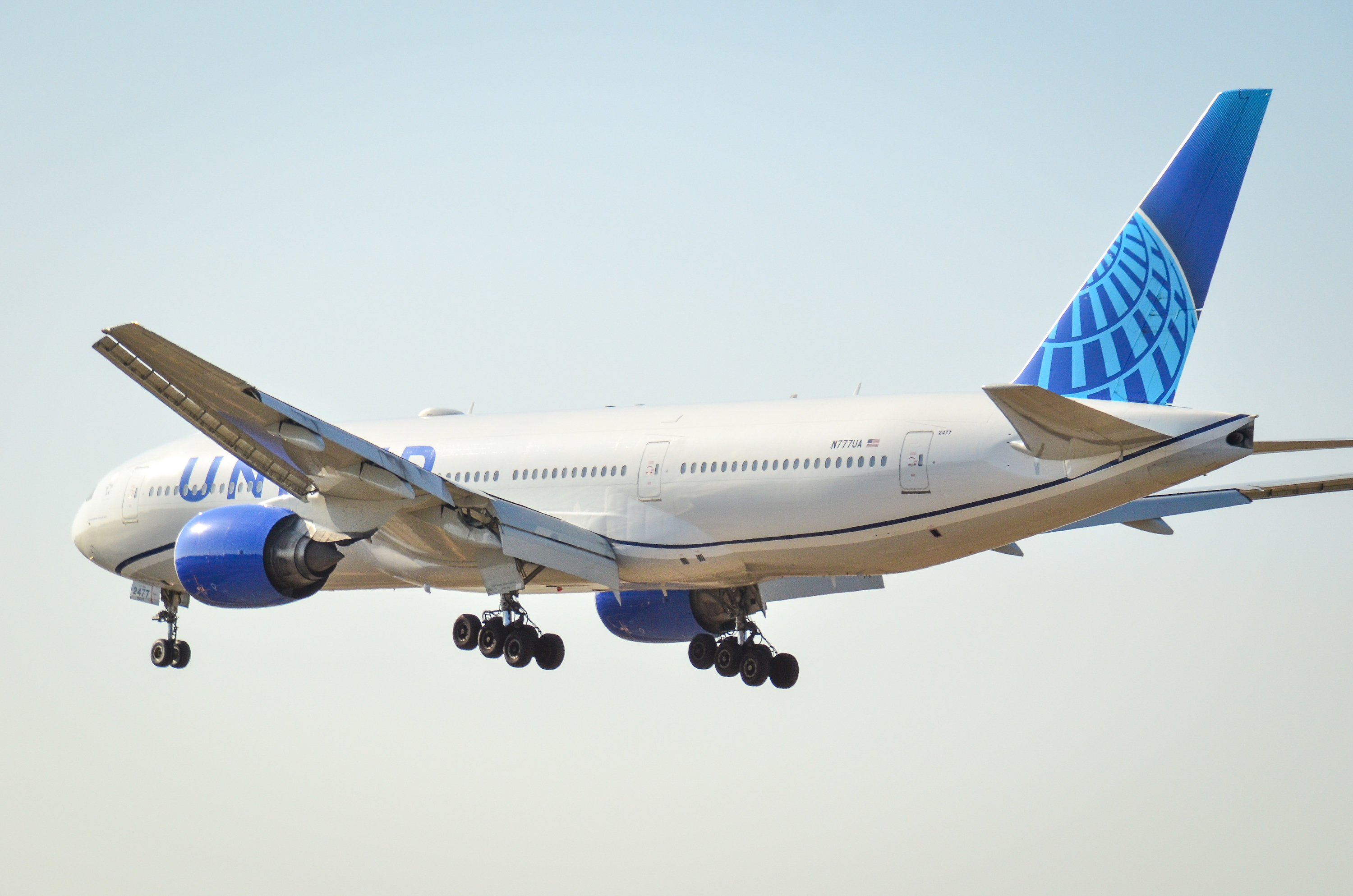Air safety reporting by The Air Current is provided without a subscription as a public service. Please subscribe to gain full access to our all scoops, in-depth reporting and analyses.
The National Transportation Safety Board on April 25 quietly released a bare-bones and uninformative preliminary report as part of its investigation into the United Airlines Boeing 777-200 that went into a sharp dive and recovery shortly after takeoff from Maui in December.
The investigation into the still publicly unexplained December 18 dive is unusual for the NTSB, which launched the investigation on February 14 only after the occurrence was revealed publicly by The Air Current on February 12. At the time, the NTSB said that it expected a preliminary report within two to three weeks.
The NTSB almost always begins an inquiry immediately following an incident or accident — in sharp contrast to the eight weeks that followed the incident aboard United 1722 — and the lack of a template for a multi-month delay has been awkward for the safety board.
Related: United Maui inquiry centers on flap retraction, crew interaction
After landing uneventfully in San Francisco, the aircraft underwent an inspection and the crew filed a voluntary Aviation Safety Action Program (ASAP) report with the airline and the Federal Aviation Administration.
The December incident did not initially rise to the NTSB reporting threshold for United as there were no injuries or damage to the aircraft, which reached an observed vertical speed of 8,600 feet per minute both descending and ascending after it departed Kahului Airport in stormy weather, according to data analyzed with Flightradar24.

The NTSB has had a spate of new high-profile investigations in recent months as investigators, airlines and federal regulators try to understand the causes of numerous close-calls involving major U.S. carriers. The NTSB has stuck to its standard reporting schedule for other incidents.
Related: United dive after Maui departure adds to list of industry close calls
The preliminary report for an incident aboard a Hawaiian Airlines A330 from Phoenix to Honolulu that hit severe turbulence on the same day as the United upset was issued less than a month later, on January 13. And the preliminary report for a January 13 runway incursion between an American Airlines 777 and Delta 737-900ER at New York’s John F. Kennedy International Airport was released on February 10.
TAC’s reporting on the investigation has centered on around the flap retraction during the initial climb out from Maui and the crew’s interaction around the upset.
The circumstances of the United incident remain opaque. The flight crew, according to multiple people familiar with the incident, had been on a multi-day trip together and both were new to the 777. The captain, who was the pilot flying, is a veteran of the airline and had recently shifted to a captain position on the 777, upgrading from the company’s Airbus single-aisle fleet. The first officer was new to both the airline and the 777, having joined the company from Hawaiian Airlines.
United Airlines at the time of TAC’s initial reporting on the incident said that the pilots had a combined 25,000 hours of experience flying, though the massive exodus of pilots during the COVID-19 pandemic upended seniority lists, triggering a massive retraining wave along with a mass migration of pilots filling open roles as travel rebounded.
United Airlines did not immediately respond to a request for comment.
The NTSB initially told TAC on April 21 that while the investigation was still ongoing, it was not planning to release a preliminary report and that was common for some investigations. After TAC sought an accounting of earlier NTSB inquiries that did not receive preliminary reports, the agency clarified and said after seeking an internal accounting of similar incidents “there was no such list.”
NTSB spokesman Peter Knudson attributed the confusion to the NTSB having “updated some report writing and releasing processes and it seems there was a lack of clarity related to the preliminary report releasing process.”
“There will, in fact, be a preliminary report,” said Knudson on April 24. “It will not, however, contain a factual narrative but only ‘data blocks’ as they are known.”
The just-released preliminary report was devoid of any contextual information beyond the incident’s location, the flight’s destination and the aircraft type and registration. The board’s initial February 14 tweet announcing the investigation described the incident as one “in which a United Airlines 777 lost altitude before recovering shortly after departing.” That description was not included in the just-released preliminary report, which does not make it clear what the NTSB is investigating.
“The narrative will be included in the final report along with the probable cause and any contributing factors,” said Knudson, who expected the final report on the Maui incident to be released this summer.
Write to Jon Ostrower at jon@theaircurrent.com
Subscribe to Continue Reading
Our award-winning aerospace reporting combines the highest standards of journalism with the level of technical detail and rigor expected by a sophisticated industry audience.
- Exclusive reporting and analysis on the strategy and technology of flying
- Full access to our archive of industry intelligence
- We respect your time; everything we publish earns your attention

